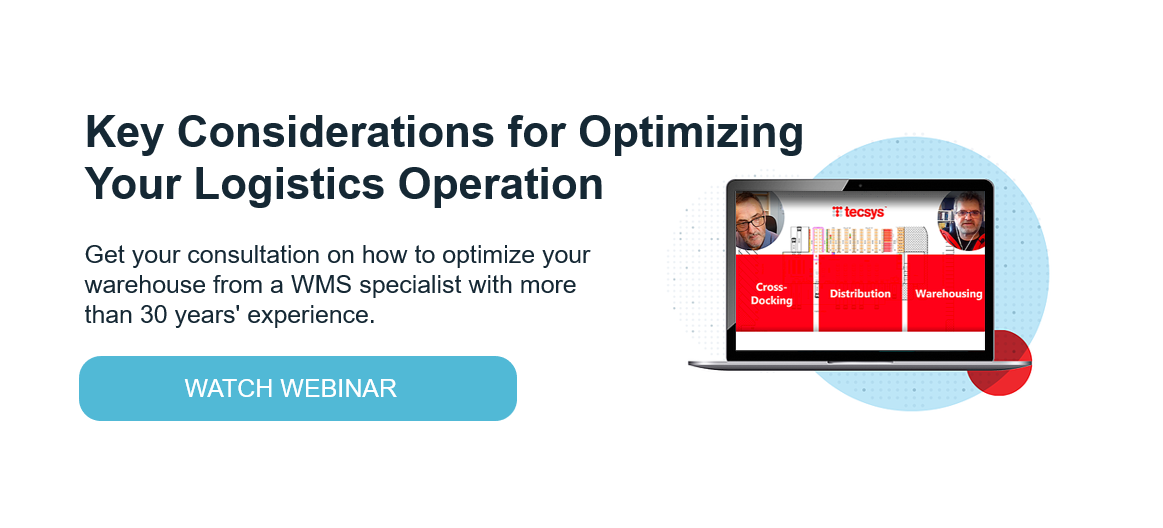Modern Warehousing Methods and Practices

The pressures to do more in your warehouse with the same or less resources are requiring organizations to find creative ways of gaining efficiency and accuracy throughout their operations. But let’s take a step back and review some modern warehousing methods and practices. With everything you have going on in warehouse management, it’s a good exercise to review this list and ensure you have all your bases covered.
9 Modern Warehousing Methods and Practices
1. Understand Cubic Dimensions
While it may seem like a massive task to enter and track every stock-keeping unit (SKU) and unit of measure (UOM) in your warehouse and then repeat the same task with all the storage locations, it is something that must be done because it is the starting point for any aspect of warehouse optimization you want to accomplish. Without a clear idea of your cubic dimensions, the following modern warehousing methods and practices simply will not work. It’s a big job, but start with one product line, one area of the warehouse or one unit of measure. Once you have one done you can move to the next one.
2. Standardize Containers
You need to understand the sizes of your containers as it allows you to predict and, ultimately, pick into the shipping container. If you have an embedded transportation management system (TMS), you can even sticker the shipping container with a shipping label prior to the pick.
3. Standardize Labels
Another modern warehousing method and practice is to label at source because having consistent labels on products throughout the warehouse enhances productivity and improves accuracy. Even having your receiving labels placed on containers in a consistent position and orientation along with consistent identification codes will also provide significant benefit.
4. Organize Cross Dock Into Short and Long Play Areas
Manage your cross dock proactively, allocating areas where cross-dock goods will be located for very short periods of time versus staged for longer periods. This enables your warehouse to have more effective space management within the cross-dock area.
5. Align Storage with ABC Slotting
Once you understand the cubic dimensions of goods and locations in your warehouse, you will want to assign the right items into the right locations based upon cubic velocity as a modern warehousing method and practice. This can have a huge impact on your pick rates and pick accuracy. Recognize that ABC slotting is not a one and done thing — build a regular reslotting process into your warehouse plans to ensure you are reacting to the most current situation.
6. Get Returns Process Streamlined
Many returns areas look like a yard sale, with returns volume increasing and the pressure to get goods back into sellable inventory as quickly as possible. Be sure to focus on the check-in, quality control and disposition of returns. A metric to keep track of is average return cycle time. You can read more in this blog post about an additional four key supply chain metrics to measure the efficiency of your operations.
7. Automate Data Collection
If you can make data collection a part of the actual activity in your warehouse, you will be more accurate and effective on top of putting in less effort. Technology for data collection has come a long way and there are countless ways to integrate data collection into your warehouse process. Make sure to review your areas where data collection is arduous, generally receiving and returns, and see if any of the more modern warehousing methods and practices for collecting data will offer enhanced accuracy and efficiency.
8. Manage “Difficult” Products Proactively
Every warehouse has products that most frequently have problems. Identify these products by monitoring miss-picks and misidentification and then notify the material handler as they perform the task that this item is categorized as “difficult.” If you just let the material handler know that this item requires special attention, the product can oftentimes get remove from the “difficult” category.
9. Optimize Everything
Review the previous eight modern warehousing methods and practices and use them as guidance, but keep in mind that nothing is perfect in your warehouse. If you can understand the pressure points and areas of friction inside your warehouse, then those are the ones you should focus on first. Optimize everything but prioritize carefully.
Next Steps
I understand this list is long and may seem a little overwhelming. Start with the methods that are most applicable to your warehouse. The right warehouse technology can help you solve many of your problems. However, you need to know where your potential problems are and apply the modern warehousing methods and practices that will help your organization the most. Good luck on your warehouse optimization journey.




